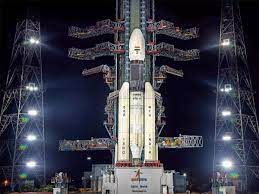CURRENT AFFAIRS
Get the most updated and recent current affair content on Padhaikaro.com
Chandrayaan-3
- IAS NEXT, Lucknow
- 05, Feb 2022

Reference News:-
The Government has informed the Lok Sabha that the Indian Space Research Organisation (ISRO) is set to launch Chandrayaan-3 in August 2022.
What we know about Chandrayaan 3 so far?
Chandrayaan-3 is the successor to the Chandrayaan-2 mission and it will likely attempt another soft-landing on the lunar surface.
- It will be a mission repeat of Chandrayaan-2 but will only include a lander and rover similar to that of Chandrayaan-2. It will not have an orbiter.
- As per ISRO, the total cost of Chandrayaan-3 mission will be over Rs 600 crores. In comparison, the total cost of the Chandrayaan-2 mission was Rs 960 crores.
What is Chandrayaan-2?
- The Mission brought together an Orbiter, Lander and Rover with the goal of exploring the south pole of the Moon.
- It aimed at studying not just one area of the Moon but all the areas combining the exosphere, the surface as well as the sub-surface of the moon in a single mission.
Why are we interested in studying the moon?
- The Moon is the closest cosmic body at which space discovery can be attempted and documented.
- It is also a promising test bed to demonstrate technologies required for deep-space missions.
- The Moon provides the best linkage to Earth’s early history.
- It offers an undisturbed historical record of the inner Solar system environment.
Why was the Lunar South Pole targeted for exploration?
The Lunar South pole is especially interesting because the lunar surface area that remains in shadow is much larger than that at the North Pole.
- There could be a possibility of presence of water in permanently shadowed areas around it.
- In addition, the South Pole region has craters that are cold traps and contain a fossil record of the early Solar System.
What happened to Chandrayaan-2?
- The Chandrayaan-2 mission, which was lost after it hard- landed on the dark side of the Moon in 2019, remains active in the form of its orbiter hovering over the Moon.
- The lander and rover malfunctioned in the final moments and crash-landed, getting destroyed in the process.
- The primary objective of Chandrayaan 2 was to demonstrate the ability to soft-land on the lunar surface and operate a robotic rover on the surface.
However, the Orbiter and other instruments of Chandrayaan-2 mission have, in two years, gathered a wealth of new information that has added to our knowledge about the Moon and its environment.
What is the information gathered?
Presence of water molecules on moon: The mission has given the most precise information about the presence of H2O molecules on the Moon till date.
Presence of Minor elements: Chromium, manganese and Sodium have been detected for the first time through remote sensing. The finding can lay the path for understanding magmatic evolution on the Moon and deeper insights into the nebular conditions as well as planetary differentiation.
Information about solar flares: A large number of microflares outside the active region have been observed for the first time, and according to ISRO, this “has great implications on the understanding of the mechanism behind heating of the solar corona”, which has been an open problem for many decades.
Exploration of the permanently shadowed regions as well as craters and boulders underneath the regolith, the loose deposit comprising the top surface extending up to 3-4m in depth. This is expected to help scientists to zero in on future landing and drilling sites, including for human missions.